F-15S Agile Eagle
An Upgrade Born From Necessity
-Lore-

In 1985, the Pulchriturian Royal Air Force (PRAF) aimed to explore options for improvement on their successful air superiority fighter & interceptor; the F-15 Eagle. With international rivalries growing slowly but noticeably since the end of the Gruneheimian Conflict of 1954, Pulchriturian military analysts predicted that airstrips would likely be targeted in a first strike--thus fulfilling the need for fighter aircraft capable of using shorter, bombed-out runways, or shorter & rougher takeoff spaces. Pulchriturian interceptors were the primary defenders in a first strike on the Pulchriturian mainland, and they were primarily in trouble--they being their F-15 Eagles, an aircraft unsuitable for short takeoff and landing distances.
So the PRAF came to the Pulchriturian Technical Institute (PTI)--a joint organization consisting of Pulchrituria's most successful engineering firms which included the manufacturer of the Eagle--and commissioned for a special F-15D trainer aircraft with specialized avionics to allow the collection of flight data, a more-powerful pair of engines derived from the F-16 lightweight fighters, variable engine nozzles that allow for thrust vectoring up to 20 degrees in all directions, and large canards attached to the forward-most sides of the fuselage just next to the variable intakes--canards that were formerly tailerons taken from the production line of the soon-to-be-replaced Pulchriturian Royal Navy (PRN) F/A-18 Hornets.
The aircraft rolled off the assembly line by 1986 and was designated the F-15 F-SCD (First-Strike Condition Demonstrator), PTI-EX-001--which designates the F-15 F-SCD as the PTI's first experimental aircraft. 10 years of research began, with the PTI and PRAF finding takeoff distances reduced by 10-15% depending on conditions & weapon loadouts, landing & stopping distances reduced by up to 50%, and controlled flight at up to 85 degrees of AoA.
Within this period of research and testing, the aircraft's maneuverability in flight was also tested, proving to be more maneuverable in a dogfight than the production F-15's due to its 3-D thrust vectoring, canards, and an incredible thrust-to-weight ratio--and more potent in beyond-visual-range (BVR) fights due to its greater acceleration and turning rate over the standard Eagle. Improvements in flight performance only improved further as the PTI began their research in intelligent flight control systems, using the flight control system of the PRAF F-16 as a baseline and applying it to the F-15 F-SCD. The use of a flight computer lessened the load on the test pilot and allowed improved flight performance with less effort and more confidence, knowing that the flight computer will prevent uncontrolled & dangerous flight conditions and--after sufficient adjustment in the code--prevent them.
Due to the F-15 F-SCD's projected improvement in performance over the standard Eagles, the PRAF greenlit and commissioned the production of the F-15 F-SCD to be commenced by 1996, equipped with a flight control system, the F-15E Strike Eagle's avionics--including its powerful active electronically scanned array (AESA) radar and air-to-ground weapons compatibility--and compatibility for the Strike Eagle's conformal fuel tanks which allows it to carry a high capacity of air-to-ground weapons.
With these upgrades, the F-15 F-SCD's production model would be a faster, more-maneuverable aircraft able to fill the role of the air-superiority F-15C Eagle and the heavyweight interdictor F-15E, capable of taking off and landing within what the PRAF calls "first-strike conditions".
The aircraft came to be named the F-15S "Agile Eagle", seeing service for the first time in 2002. Ten new models were flown by 10 PRAF pilots & their trusted weapon systems officers (WSO's) over Tanruil during the Three-Week War, wearing Tanruilian Air Defense Force F-15E liveries to assist Tanruil in their air and ground campaigns against Natsikrovian invaders without exposing Pulchriturian interference.
The war ended with the Agile Eagles scoring a 31:0 kill ratio, with the PRAF flight crews left unnamed and the 10 disguised Agile Eagles being given to the Tanruilian Air Defense Force (TADF) as a token of allegiance. Tanruilian officials did not acknowledge the 10 Agile Eagles publicly until the model's official public reveal and first flight in Pulchrituria.
Taking off from Fort Christopher Air Force Base in Glimmer City, the 5 Agile Eagles put on an air show, showing an incredible turn rate, roll rate, and hard upwards acceleration. The Agile Eagles then showcased full control of the aircraft's nose through extreme high-alpha maneuvers using a so-called Reduced Stability Mode (RSM)--a flight control setting that increases the aircraft's sensitivity to pilot input, decreases the sensitivity of the flight control system to allow harder maneuvers while still within computer assistance, and raw control over the canards.
Following the confirmation of Tanruilian leaders on the use of F-15S Agile Eagles in the Three-Week War, joint exercises between the TADF and PRAF commenced to train chosen Tanruilian pilots to use their 10 donated Agile Eagles and to train Tanruilian aircraft technicians on how to maintain them through training with Pulchriturian technicians. The F-15S saw a fated success in the international market, seeing purchases from allied Free World Alliance (FWA) nations already operating F-15C's or F-15E's and--in an attempt of lessening tensions and promoting peace along Pulchriturian borders--a sale to their imperial neighbor.
-Description-

The F-15S Agile Eagle is a fictional, twin-engine, all-weather, supermaneuverable multirole fighter based on the F-15 ACTIVE. Bearing 3-D thrust vectoring engines and large front canards, the Agile Eagle is capable of a greater degree of maneuverability and nose authority, with easier controls thanks to a two-mode fly-by-wire system that allows the pilot to choose between regular flight mode and a more-sensitive & less-stable flight mode for extreme maneuverability. The additional lift and vectoring thrust provided by the aircraft's upgrades also greatly reduce takeoff and landing distances, allowing aircraft operation in less-survivable grounded conditions.
It wears the same USAF grey livery seen on air-superiority F-15's to signify its role as an upgraded Eagle with a primary air-superiority role.
-Loadouts-
Current Loadout- Air Superiority - 2x Drop Tanks, 2x AIM-9X, 6x AIM-120C, 1x SUU-23
Alt. Loadout 2 - Strike - 4x AGM-65D. 2x AIM-9X, 12x GBU-38
Alt. Loadout 3 - Clean
-Controls-
Normal [Throttle]/[Pitch]/[Roll]/[Yaw]/[LandingGear]
- [Throttle = 85% to 90%] Military Power
- [Throttle = 90% to 100%] Afterburner
[VTOL] Elevator Trim (Inverted)
[Trim = 0%] Auto Flaps, [Trim = 0% to +100%] Flaps Up Override
[FireGuns] Fire 1x 20mm M61A1 Vulcan
[AG1] Lights
[AG2] Reduced-Stability Mode (RSM)
[AG8] Master Arm
Hardpoint Activation Groups
[AG3] Wing Hardpoint 1B Drop Tank Release
[AG4] Wing Hardpoint 1A AIM-9X Manual Release
[AG5] Wing Hardpoint 1C AIM-120C Manual Release
[AG6] Fuselage Hardpoint 1 AIM-120C Manual Release
[AG7] Fuselage Hardpoint 2 AIM-120C Manual Release
Cameras
[Cam1] Targeting Pod View (Alt. Loadout 1)
-Author’s Notes-
- Fuel and gun ammo is unlimited.
- On takeoff, I recommend 60% trim with auto-flaps. Get to around 270 km/h and give taps for the pitch to avoid tail striking and generate lift (For keyboard users).
- To perform a cobra maneuver, slow to 600 km/h, throttle to military power/afterburner (if you haven’t already), activate RSM, and pitch up. Simply bring the nose back down and release pitch to level out.
- To perform a kulbit maneuver, slow to 300 km/h, activate afterburner & RSM, and pitch up. You must be level and around the height of your kulbit or you will lose yaw stability. As you reach 270 degrees of rotation during the kulbit (nose-down, or 3/4's of the rotation finished), release pitch and let the fly-by-wire stabilize the plane to level out.
- To perform a falling leaf maneuver, slow to 600 km/h, activate RSM, and roll & pitch up simultaneously to initiate the spin. Then, once the spin initiates, you can use yaw to control spin speed and the pitch to control the nose for more or less angle. To recover, counter yaw until you are facing your desired direction and pitch up gently to generate lift until you begin flying straight again. Or deactivate RSM and let the plane guide itself harshly back to stability. Warning: You may be significantly lower in altitude than where you started.
-Updates From Last Post-
- Adjusted fly-by-wire again for smoother flight control.
- Added Pitch-controlled combat flaps to further enhance maneuverability, especially in low-speed flight.
- The two additional AGM-65 Mavericks for the Strike loadout have been removed again in favor of the two self-defense AIM-9X's, with the addition of the Strike Eagle's CFT's carrying 12 GBU-38 JDAM's. This upgraded Eagle can now serve the role of both F-15C's and F-15E's as intended in its lore.
- New USAF grey Eagle livery!
-Credits-
- @OkaNieba - for the original two-seat Eagle I modified to create this aircraft.
- @ReinMcdeer - for the original F-15C from which the F-15E was derived, the canards of the F-15 ACTIVE, the F-15C in its standard loadout used in the Lore screenshot, and the SU-30SM used in the Description screenshot.
Specifications
Spotlights
- ACEOFFICERS 7 months ago
General Characteristics
- Successors 1 airplane(s) +7 bonus
- Created On Windows
- Wingspan 42.9ft (13.1m)
- Length 63.8ft (19.4m)
- Height 19.0ft (5.8m)
- Empty Weight N/A
- Loaded Weight 45,588lbs (20,678kg)
Performance
- Power/Weight Ratio 1.271
- Wing Loading 34.5lbs/ft2 (168.5kg/m2)
- Wing Area 1,320.6ft2 (122.7m2)
- Drag Points 1836
Parts
- Number of Parts 418
- Control Surfaces 10
- Performance Cost 1,928

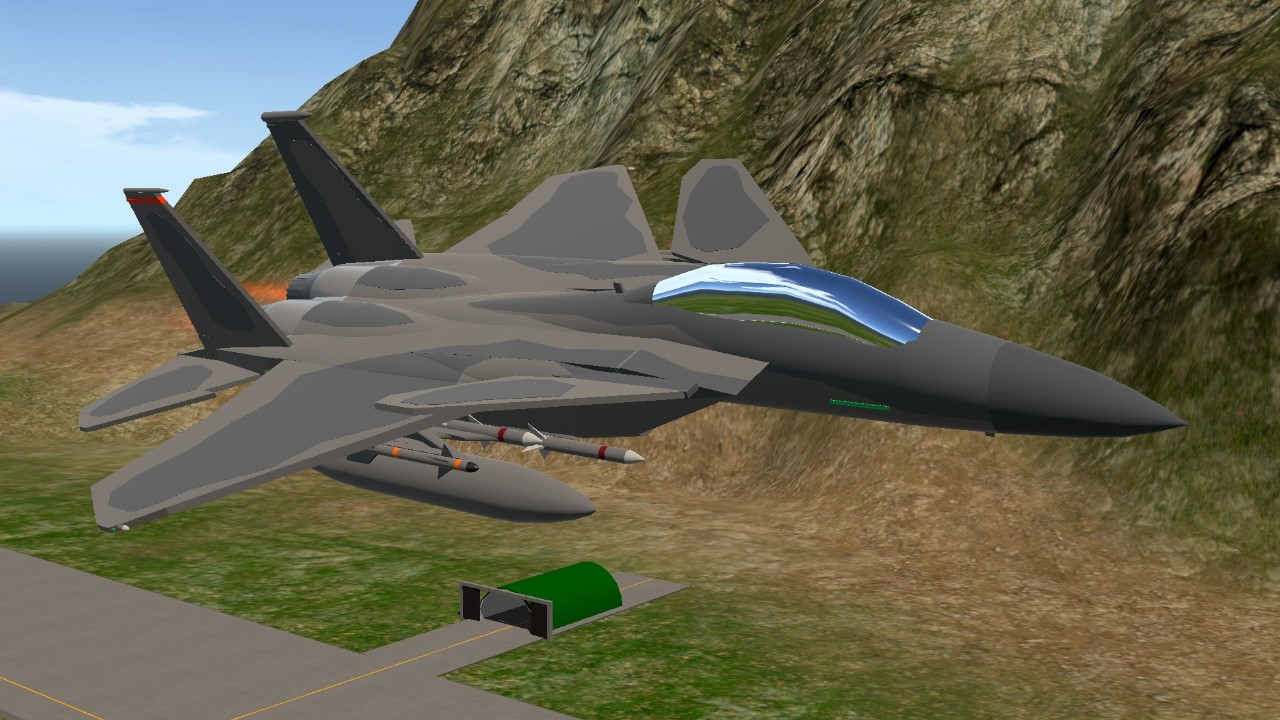
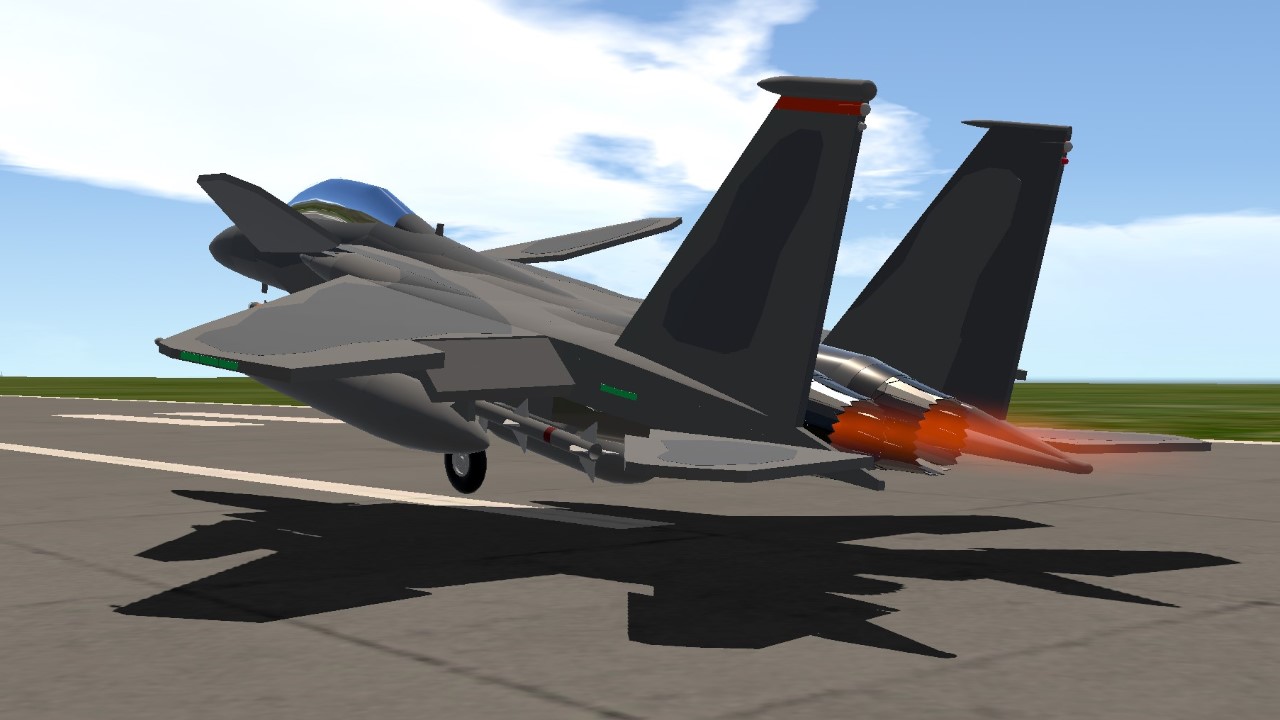
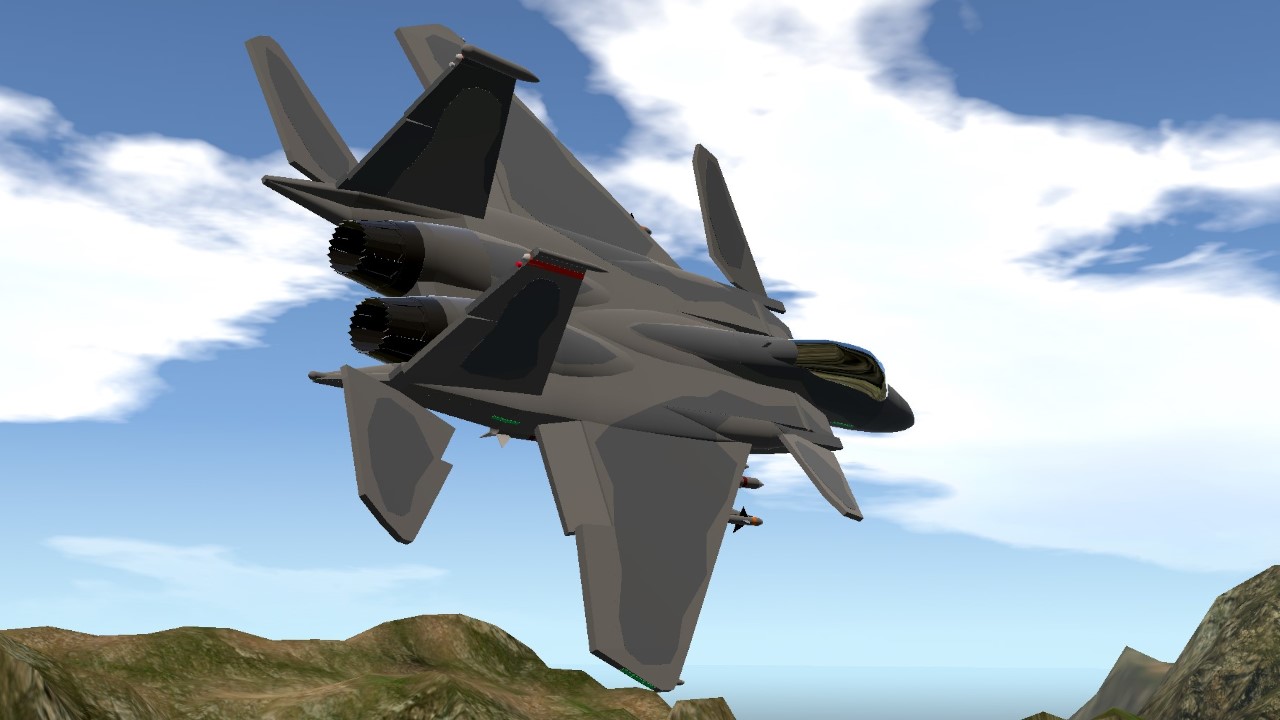
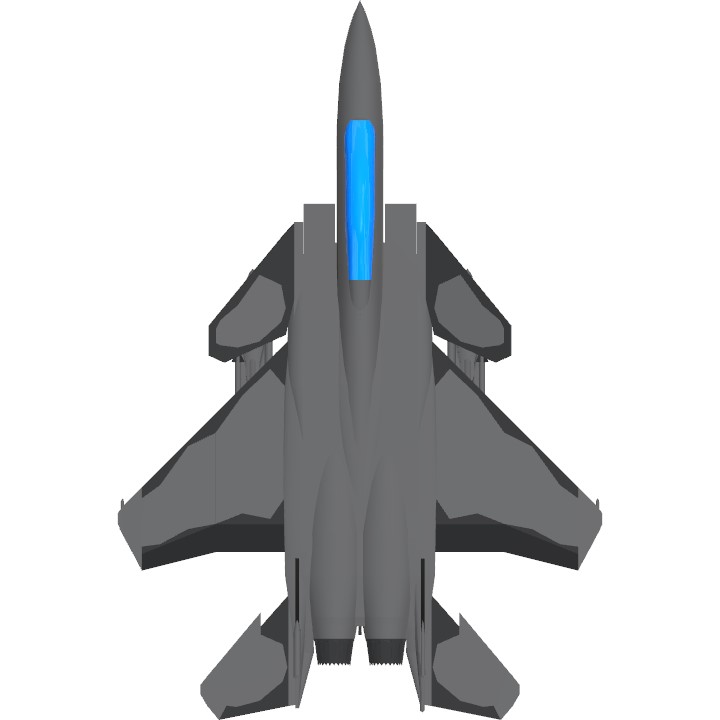
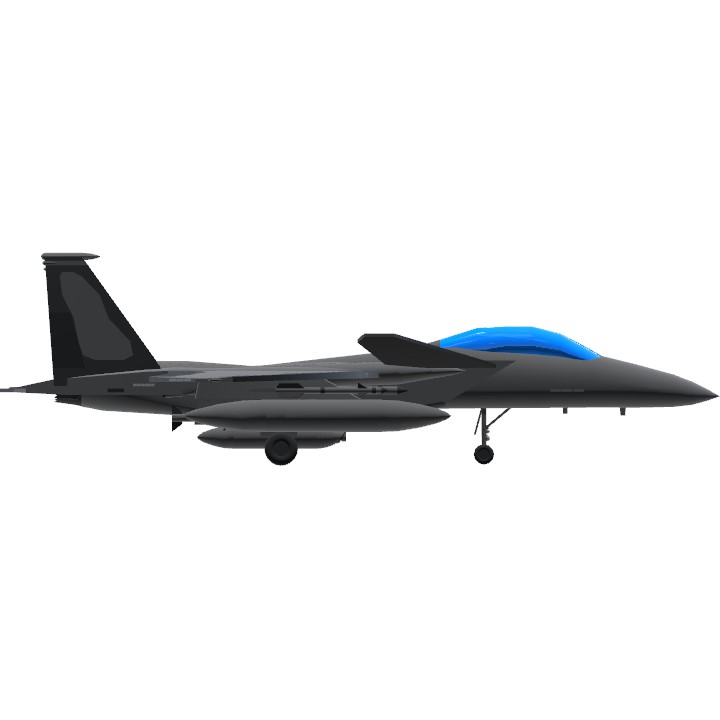

Credits:
@Reinmcdeer
@OkaNieba
@RandomSPGuy also, is that an error in the wall of text i wrote somewhere lol
@RandomSPGuy ayo?
Bro put 2 ears on the nose 💀